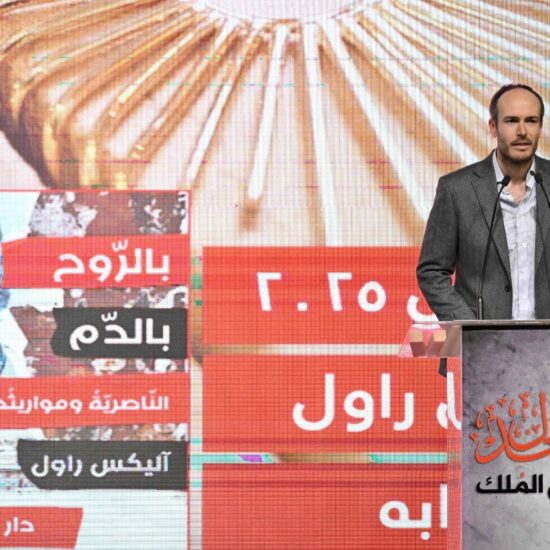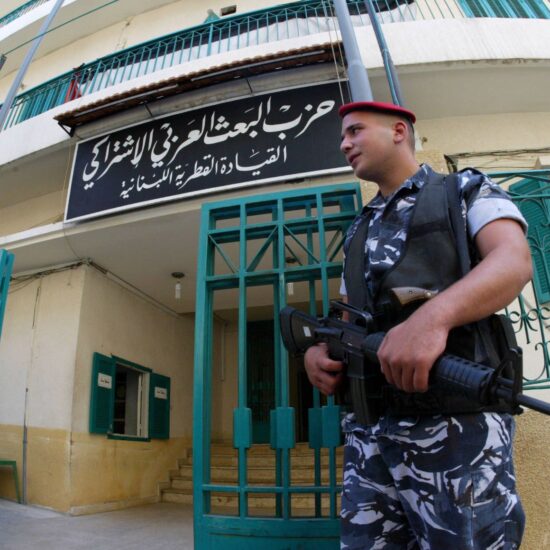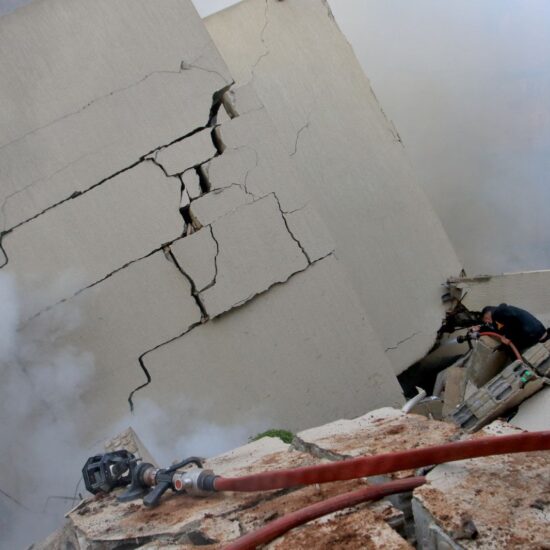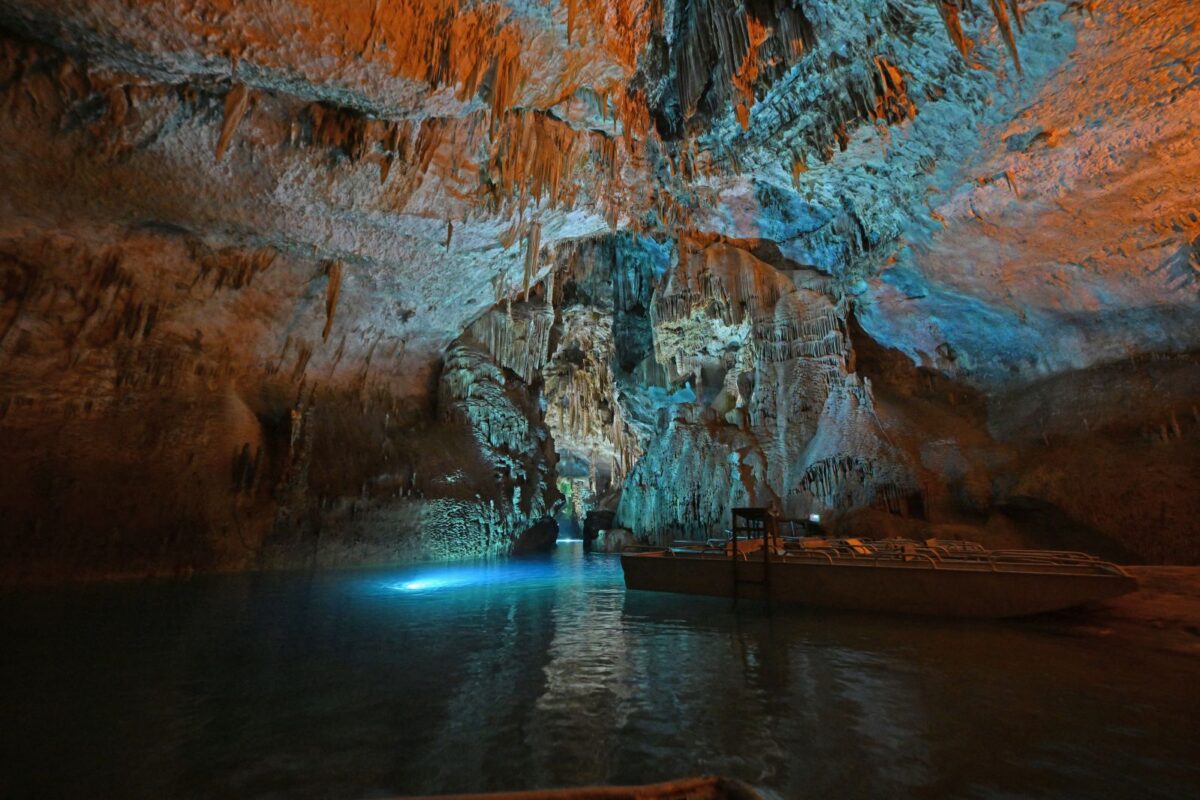
The Roman ruins in Bashura. Jeita Grotto. Amchit seal caves. The three recent stories of building abuse and privatisation of public space say something more about the Lebanese state’s well-known negligence towards its endangered treasures: in an unusual convergence of intentions, it is the civil society who is taking the fate of the country’s protected spaces into its own hands—denouncing, protesting, and demanding that those responsible be held accountable
Johanna and I took it as a challenge: we asked the crowd around us about the vitality of their urban citizenship. The question we asked was: where do you go when you want to spend time outdoors, for free, and without consuming anything? The answer: a walk along the Corniche, the stairs above Riwaq, sometimes the beach of Ramlet el-Baida. We were talking about green spaces in Beirut, “but no one goes there,” someone replied from the small group of friends gathered for dinner: we eat at home, Beirut restaurants have become too expensive, and then we go out to shut ourselves away in some bar or café. Until a few weeks ago, no one had any idea that there was a protected area in Amchit often visited by monk seals; that the fragile caves of Jeita could host a party; or that in Bashura, a neighbourhood that unexpectedly became impassable during the last Israeli attack on Beirut, the Romans had built a necropolis: they would not even have known that a private company was levelling part of the area to build a car park, but of course, they would not have been surprised by that.
Bashura 740, Jeita, Amchit. Although the stories behind these names do not refer to squares or revolutions, they say a lot about the political significance of public space, especially when threatened by the specter of irreversible privatization. And talking about the “right to the city” in a peripheral or extra-urban context–naturalistic or archaeological, but in all three cases: underground–becomes a way of touching, in a broad sense, on the theme of the right to claim a space that belongs to the people, and which both the greed of private companies or individuals and the negligence of the state threaten to take away from us.
“The right to the city legitimizes the refusal to be excluded from urban reality by a discriminatory and segregative organization,” wrote Henri Lefebvre in his Le Droit à la Ville. He continues: “The right to the city therefore means the constitution or reconstitution of a space-time unity, rather than fragmentation.”
Such a fragmentation, in a place torn apart by deep socioeconomic and sectarian divisions such as Lebanon, inevitably reverberates in the collective geographies: the cities. And the phenomenon is not new. As Lebanese sociologist Samir Khalaf wrote in his book Beirut Reclaimed, referring to the convergence of physical and social spaces that characterized the city in the first half of the nineteenth century until, starting from the 1840s, Ottoman power began to decline and European influence grew: “This almost idyllic interlude in Beirut’s history did not survive for long […] Inevitably, perceived spatial distance between the various communities grew wider after such fractious interludes.”
And once perceived, distance becomes spatial. In this sense too, we can grasp the political significance of public space: these cities–in Lefebvre’s sense of the term–have ended up resembling us, and we have ended up resembling them. How else can we explain that even the poignant devastation of the civil war would be incorporated into the envisioned future space of the city? That empty houses would continue to represent the diaspora? How can we deny that the new spatial shape–inevitably privatized–is a reflection of the upcoming political sphere?
The only difference is that the fragmentation we are referring to now is not so much confessional–nor is it the one so often discussed in other contexts between diasporic communities and residents, the gap between their right to vote: the fragmentation that threatens to crush us now is vertical, and it is that between us and the ruling class–politicians and entrepreneurs; between our attempt to defend a place and their excavators and bulldozers; between our protests and their concrete slabs; between our respect for the rules and their placing themselves above any rules; between our desire for beauty and their lust for money.
Bashura 740: from Roman Necropolis to parking lot
A series of photographs posted on social media in the past weeks have reignited the debate over a parking-lot development in Beirut’s Bashura neighborhood, raising critical questions about heritage protection and commercial priorities. Images show heavy excavation equipment operating on parcel 740—a site previously identified as an archaeological zone—on the edge of the Ring highway. Although the Direction Générale des Antiquités (DGA) at the Ministry of Culture insists that only the portions of the land “free of archaeological remains” were authorized for work, heritage activists and local observers argue that the distinction is unclear and that the broader integrity of the site is under threat.
“There are many question marks, we are all asking the question: what kind of negotiations took place, at whose expense? What kind of interests are intertwined?”, asked Soha Mneimneh, urban researcher at the Beirut Urban Lab at the American University of Beirut (AUB), when interviewed, at the site, by The Speech. “It’s actually an archaeological city, so we’re talking about a city a bit smaller than Baalbeck, called Necropolis, which means ‘the city of the dead’,” she continued. “Today, the square that is being buried is part of this archaeological city. This property was merged with adjacent lots by a real estate development company, and this company belongs to Beirut Digital District (BDD).”
The real-estate company behind the scheme, Alia & Co., maintains legal ownership of the parcel, but the view of a bulldozer on top of ancient layers has prompted renewed alarm among the public, underscoring the tensions between the private ambitions of commerce and the common concern for the preservation of Beirut’s historical palimpsest. For a piece of land that in Roman times used to host the dead, being buried to make room for yet another parking lot—and therefore being condemned to oblivion—is certainly not the most desirable prospect.
“If this land was given its value, legally speaking, the Directorate of Antiquities and the Ministry of Culture must have expropriated it, as we’re referring to the law issued in 2016,” Mneimneh concluded.
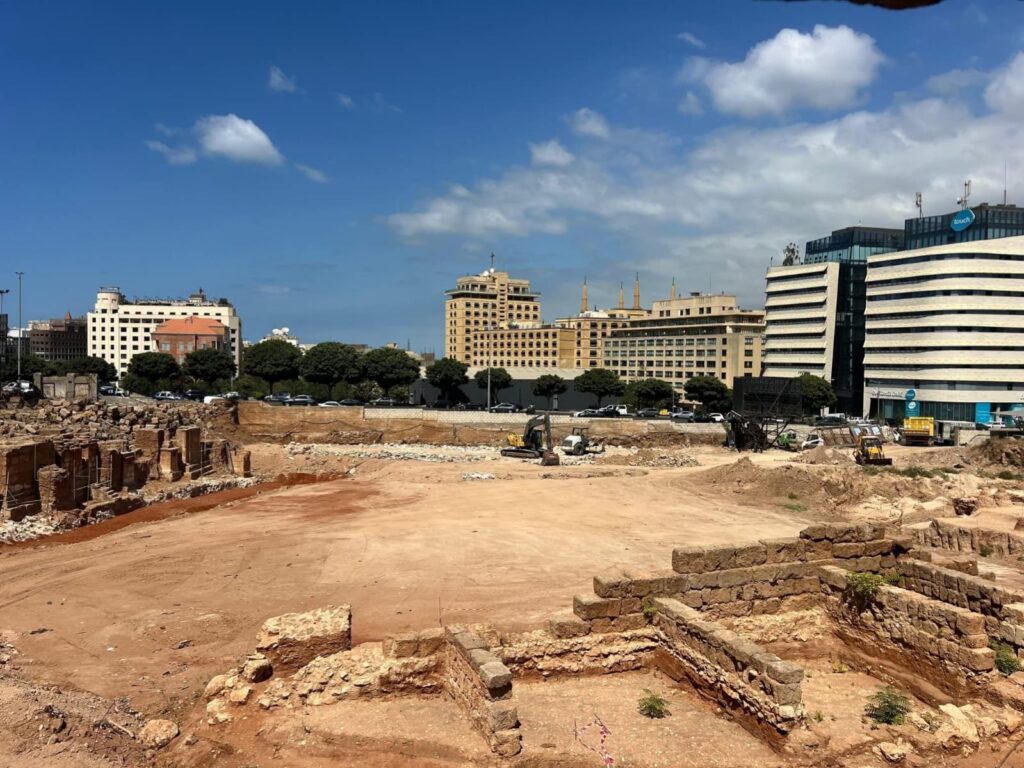
The archaeological site of Bashura at the beginning of the works that transformed it into a parking lot. Credits: Beirut Heritage
In the days following the initial uproar, the Ministry of Culture confirmed that it had not received a formal written request or full documentation for the project, despite the requirement that any intervention on the site be coordinated with the DGA.
Local channel LBCI reported that the Interior Ministry has since asked the Mount Lebanon governor to clarify how the work was authorized, while heritage activists have launched online campaigns demanding an immediate halt to construction until a transparent archaeological assessment is carried out—as even areas described by officials as “free of visible remains” may contain layers of historical material, and removing soil without proper supervision risks destroying evidence that cannot be recovered. Meanwhile, heritage specialists quoted in Lebanese media warned that stripping, relocating, or rebuilding archaeological material outside its original context permanently erases the scientific value of the site—a loss that no future excavation can reverse.
“We’re at the Bashura 740 site, an archaeological site,” said Samira Ezzo, tour guide and founder of Layers of Lebanon, to The Speech. “Artifacts were found there dating back to the Roman period. That’s how significant it is. We learned that this archaeological area will be turned into a parking lot. Then what’s going to happen to it? Since we know that in the historic area in central Beirut the most significant archaeological discoveries are revealed, and every time we dig a little more we find artifacts.”
It is also true, sadly, that the most common reason for excavations in Beirut, usually, is because someone has purchased the land for a major real estate project. If ruins are found, by law the developer should alert authorities, allow archaeological excavations and fund those excavations until completion is determined to be complete. Yet nothing, in this case, could stop the work of concrete burial of Bashura’s archaeological site. “From 2014 till now there have been six ministries of culture. So during all that time, and in 2018 when it was approved to merge this land into private property, we’ve been asking about the scientific reports that we’re supposed to check,” Samira demanded.
Just until a few hours ago, a decision was to be made on whether or not the ruins would be kept in place, buried under concrete, or demolished, in order to make way for the parking lot project. But between the night of Wednesday and Thursday, the most part of the work has been completed: the construction of a so-called ‘temporary’ parking lot won over the preservation of the archaeological site in Bashoura. The esplanade has been paved. Goodbye, historians and tourists. Welcome, machines.
The artifacts have been already removed from their original places, piled up, and fenced off “for protection.” Within just a few hours, the area was paved over, as documented in videos that Samira Ezzo shared with Megaphone.
Although the Ministry of Culture approved the implementation of this project, “on the condition that it complies with the requirements of the Directorate General of Antiquities,” how that decision was made is often not a very transparent process and ruins found on many plots across Beirut have been cleared over the last few decades, such as the Roman chariot racetrack, or Hippodrome of Beirut, which was gutted and is now the site of a luxury real estate project. And these cases are not isolated.
The recent destruction of the Bronze-Age site of Tell Fadous-Kfarabida was the focus of the roundtable discussion held at AUB on Wednesday, November 5, in the Department of History and Archaeology and under the warning title: ‘Archaeology at Risk: Rethinking Heritage Protection in Lebanon.’ Tackling the debated topic of cultural sites located on private properties—which is the case of Bashura 740—Nelly Abboud, Cultural Manager of Museolab, and former member of the International Council of Museums (ICOM), commented that “the reality is so fragmented that most of the sites, especially in Beirut, are not well protected, nor preserved, and most of them are completely neglected. Simply, there is nothing happening.”
And it is therefore this fragmentation, the sharp line between private and communal, forbidden and accessible, that makes disappearance continue under the masquerade of development: and by disappearing public space, you also disappear public identity, which in Lebanon is already fractured along socioeconomic and sectarian lines.
Whatever the case, since construction has proceeded without the safeguards that social mobilizations and legal challenges might have brought, the outcome will be irreversible damage to archaeological layers and the loss of heritage that cannot be recovered or rebuilt. Just as happened in the Hippodrome, where the public will never get to see the outline of the track, nor will ever be able to see the site in its original open air context, to understand its relationship to the city, to imagine what it must have been like to sit there, towering over ancient Berytus and watch the races—now that Bashura 740 really turned into a parking lot, there will be no one left to imagine what a city of the dead might have looked like in the center of Roman Beirut.
In the short term, the key indicators to watch will be whether the Ministry publishes a detailed report of the parcel’s heritage survey; whether the DGA imposes an official stop-work order pending review; and whether local courts accept petitions from civil society groups to block further construction. The situation is being watched not just as a one-off conflict in Bashura, but as a test case for how Lebanon balances commercial development with the preservation of its deep historical and archaeological legacy.
Jeita Grotto: from public heritage to private party
A private wedding celebration held inside one of Lebanon’s most prized natural sites last Friday has triggered widespread criticism, after footage circulated online showing guests dancing and playing music inside Jeita Grotto. The videos, which surfaced on Monday, November 3, show the wedding party entering the lower cave by boat before staging what appeared to be a festive pre-wedding gathering in the normally restricted underground chambers.
The Jeita Grotto is a remarkable system of limestone caves, known for its impressive stalactites, stalagmites, and underground rivers, and celebrated for both its natural beauty and geological importance. Although the site was inhabited in prehistoric times, the lower cave was not rediscovered until 1836, when Reverend William Thomson, an American missionary, ventured some 50 meters into the then-unknown cavern. Upon reaching the underground river, Thomson fired a shot from his gun, and the echo that followed convinced him he had found a space of extraordinary scale. The name Jeita—the town where the cave’s entrance lies—means “roaring water” in Aramaic, a fitting reference to both the sound of the river and the resonance that has shaped its cultural—sometimes scandalous—history.
Despite its protected status, Jeita Grotto has repeatedly been treated as a performance venue rather than a fragile thus protected natural site. As early as 1969, the caves were used for an electronic music concert by François Bayle, followed months later by another experimental performance by Karlheinz Stockhausen, and after a closure of 17 years during the Lebanese Civil War—when both tunnel systems were repurposed for storing munitions, while the surrounding buildings were used for military operations—in 2008 it hosted again a classical concert by pianist Guy Manoukian: all events exploiting the grotto’s acoustics rather than respecting the vulnerability of its limestone walls and the optimal habitat of its bats, whose activity can be reduced by up to 50% due to vibrations from amplified sound, forcing them to flee deeper into the cave, or to abandon it entirely. While often framed as ‘cultural milestones’, these events set a precedent for treating a delicate geological formation as a stage, normalizing activities that risk long-term damage to a site that should never have been exposed to amplified sound, lighting, and large crowds in the first place.
Yet last Friday’s performance had more to do with money and privatization than culture. The incident provoked anger among Lebanese citizens and foreign observers alike, many of whom accused the authorities of applying double standards. Ordinary visitors are in fact required to follow strict conservation rules inside Jeita Grotto: photography is allowed only with prior permission, loud voices are discouraged, and the use of bright lights or flashes is banned to protect the cave’s fragile limestone formations, prevent algae growth, and avoid disturbing the species that inhabit the site. Yet the couple, Sarah Chammas and Alex Widmann, were granted exceptional access to host a full event with live music and lighting—exactly the kind of activity the rules are supposed to prohibit—fueling public outrage and renewed debate over who the restrictions truly apply to, and until when the wealthy shall treat public spaces as if they were their own properties.
The backlash was immediate. Social media filled with anger and disbelief, with many users denouncing the event as yet another example of privilege overriding public rules. Some mocked the wedding as a symbol of Lebanon’s culture of entitlement, where access is granted to the well-connected while ordinary visitors are fined for taking a single photo.
Public historian Charles Hayek was among the first to condemn the incident. He stressed that a geological site that required millions of years to form “cannot be turned into a venue for commercial spectacle that disregards its irreplaceable value.” Calling the event a sign of “backwardness,” Hayek criticized the Tourism Ministry for what he described as weak and insufficient measures. “Temporary closure for comprehensive protection should be implemented immediately,” he wrote on his social media accounts, urging authorities to suspend access until qualified conservation specialists are appointed to manage the site properly.
As a response, in a statement issued on Tuesday, the Tourism Ministry clarified that Jeita’s mayor, Walid Baroud, had only informed Minister Laura al-Khazen Lahoud verbally about plans for the event—generally described as ‘a party’—inside the grotto, without submitting the formal written request that is legally required. The ministry said it never received any official paperwork detailing the nature of the event, the financial arrangements, or the mandatory approval from the Speleo Club du Liban, which oversees cave-related activity under the site’s management contract. As a result, the ministry announced that it has formally warned the Jeita Municipality for violating procedure.
Meanwhile, Interior Minister Ahmad al-Hajjar has asked the Mount Lebanon governor for an explanation of how the event was authorized, according to local broadcaster LBCI.
In response to the backlash, the independent media outlet Megaphone published a statement from Jeita Municipality and grotto manager Imad Safir, who defended the decision, insisting that the lighting and sound systems used were minimal, approved by specialists, and did not put the site at risk. He added the event lasted only 30 minutes, involved no food or drink, and that revenue from the booking would be used for maintenance and cleaning. He also noted that municipal teams were deployed throughout the grotto during the gathering to ensure that no protected areas were harmed.
Last November, the Grotto closed for nearly eight months following the death of Nabil Haddad, owner of Mapas, the company that operated the site—and only reopened in July. As Megaphone reported, the ministry began exploring new operators after his death, but soon realized the bidding process would be lengthy. To avoid missing the summer season, the ministry reached a solution: a temporary agreement with the municipality to manage, operate and maintain the Grotto, until the bidding process is completed by the end of the year. Until then, the municipality is generating significant revenue from the attraction. The contract allegedly allots 60% of it to the municipality, and the remnant 40% to the Ministry—giving Jeita a direct financial benefit from the natural caves. But as no contract nor revenue were shared on Friday’s event, it is plausible to believe that the municipality cashed all the money, despite declining to disclose the amount earned. “It’s best to ask the Ministry of Tourism about this,” Safir commented, implying the Minister is fully aware.
Amchit monk seal caves: from environmental protection to illegal villas
Since mid-October, the environmental association Terre-Liban has condemned the resumption of construction on a coastal plot in Amchit, an ecologically sensitive area overlooking a natural cave recognized by scientists as a refuge for the endangered Mediterranean monk seal. Excavation work at the site began at dawn on Wednesday, October 15, and was documented by local activist Farid Abi Younes, according to the association. “The resumption of the project has been strongly condemned by environmentalists and residents,” Terre-Liban stated, as excavations were—and are—still ongoing.
The project—the construction of a private villa directly above a cave regularly visited by the protected Mediterranean monk seal—has reignited broader debates over cultural preservation, public access, and urban development along Lebanon’s coastline, just a few days after another case—that of journalist Ragheda Dergham, who is reportedly building a private villa on the seafront in Kfar Abida—shed a shameful light on the issue of private violations of public maritime property.

A bulldozer at the controversial construction site in Amchit, above the cave that houses the monk seal. Credits: Terre-Liban
Yet, in an apparently positive development in the case of the Amchit monk seal cave and the construction site above it, Summary Affairs Judge Berta Samaha ordered on Tuesday, November 4, the “immediate halt of all excavation and construction work on property No. 345 in Amchit,” placing particular emphasis on the word “immediate.” The ruling, prompted by a petition from MP Najat Aoun Saliba and architect Farid Abi Younes, imposes a penalty of LBP 200 million for each day of non-compliance.
The decision, commended by NGO Terre-Liban as it “reinforces the rule of law and protects Lebanon’s natural heritage, and calls on the Internal Security Forces to enforce it without delay and in full accordance with legal procedures,” forces property owner Roula Bahnam to halt all works until the Public Prosecutor at the Court of Cassation in Mount Lebanon, Judge Jamal Hajjar, issues a final order following the completion of investigations.
Unfortunately, just hours after the decision was issued, activists were forced to once again stage physical sit-ins to prevent cement from being poured over the cave. Despite the ruling, in fact, construction continues. The Ministry of Environment had issued a similar order on October 19, halting construction pending an environmental impact study: back then, the decision was also circulated to the Ministries of Public Works, Culture, the Governorate of Mount Lebanon, and the Municipality of Amchit for appropriate action. But, in defiance of the Minister’s request, even then, excavations went on.
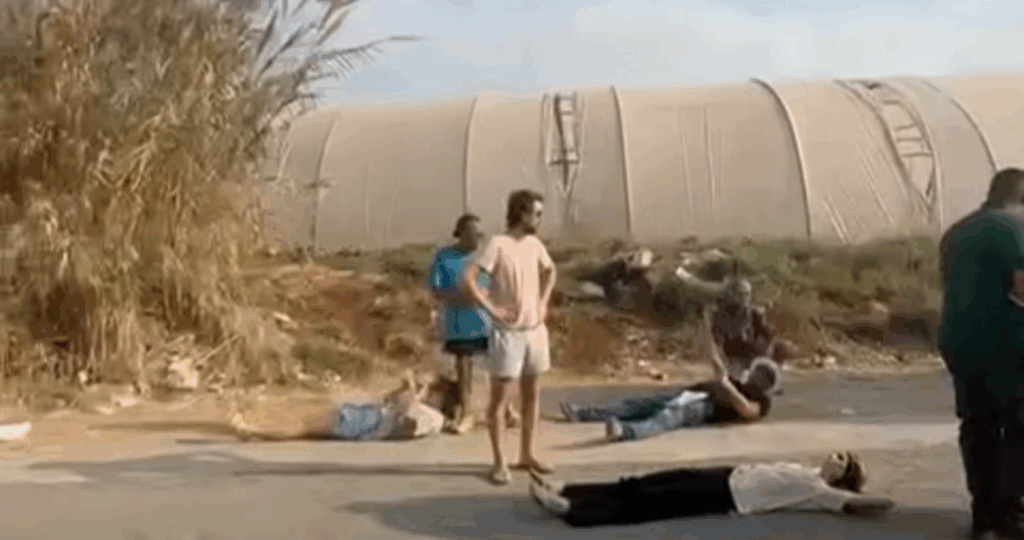
Protesters lying on the ground to prevent cement mixers from carrying out construction works near monk seal cave in Amchit on Nov. 5, 2025. Credits: National News Agency
The ruling follows weeks of public pressure and activism, including an open-ended hunger strike launched by environmentalist and journalist Saade Saade and a protest organized by the Save Our Seals Campaign at the site in late October. The Campaign reiterated its demand for a comprehensive Environmental Impact Assessment (EIA), as required by law, emphasizing that any construction near the cave poses a grave threat to one of Lebanon’s few remaining habitats for the species at risk.
Our ‘droit à la ville’
The right to the city that Henri Lefebvre talks about in his extraordinary and forward-thinking work does not simply express the demand for essential needs, which the actors and protagonists of these stories have not voiced–and which would instead open another chapter, linked to the housing emergency, the lack of funds for reconstruction, and the increasingly recurrent threat of displacement, especially in the south of the country.
Rather, it takes the form of a specific quality of citizenship, which includes access to the city’s resources–more or less buried underground–and the possibility of experiencing an urban life that is an alternative to the logic and processes of privatization and capital accumulation. “The right to the city,” writes Lefebvre, “presents itself as a higher form of rights, as the right to freedom, to individualization in socialization, to habitat and to dwelling. The right to action (to participatory activity) and the right to fruition (quite different from the right to property) are implicit in the right to the city.” And what, if not the right to participation and fruition, do these stories talk about?
This right therefore involves breaking down the mechanisms that control and standardize everyday life, reclaiming the time and space of urban living, which requires a new configuration of social, political and economic relations, starting with a drastic change in the decision-making arena. This is the disruptive news hidden behind Bashura 740, Jeita and the caves of Amchit: not so much the well-known negligence of the state, nor the greed of the privileged elites, but rather the common purpose of strongly localized parts of civil society in saying no: we are not going along with this. We disagree. And in persisting with their goal. To dispel the myth that such conflicts are lost from the outset; that not everyone has a right to the city and a place in its geography; that the current reality has crystallized, and therefore normalized, a conception of the abusive and illegitimate use of public spaces.
“Our main political task,” suggests Lefebvre, “is therefore to imagine and reconstitute a model of the city that is completely different from the horrible monster that global and urban capital incessantly produces.”
In other words, if the spatial needs of these citizens include the geographical translation of their political practice, the conclusion is logical: deciding on the city means deciding on politics. And the self-determined strength of a place like Lebanon, although confined within a space that is still legally ambiguous, architecturally peripheral and overexposed in the media, highlights the need to protect its symbolic and material value.



